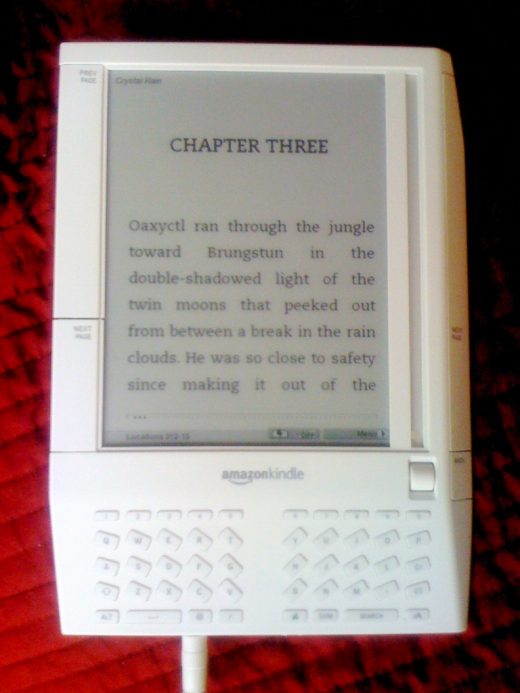A look back at the triumphs and stumbles of the original Kindle
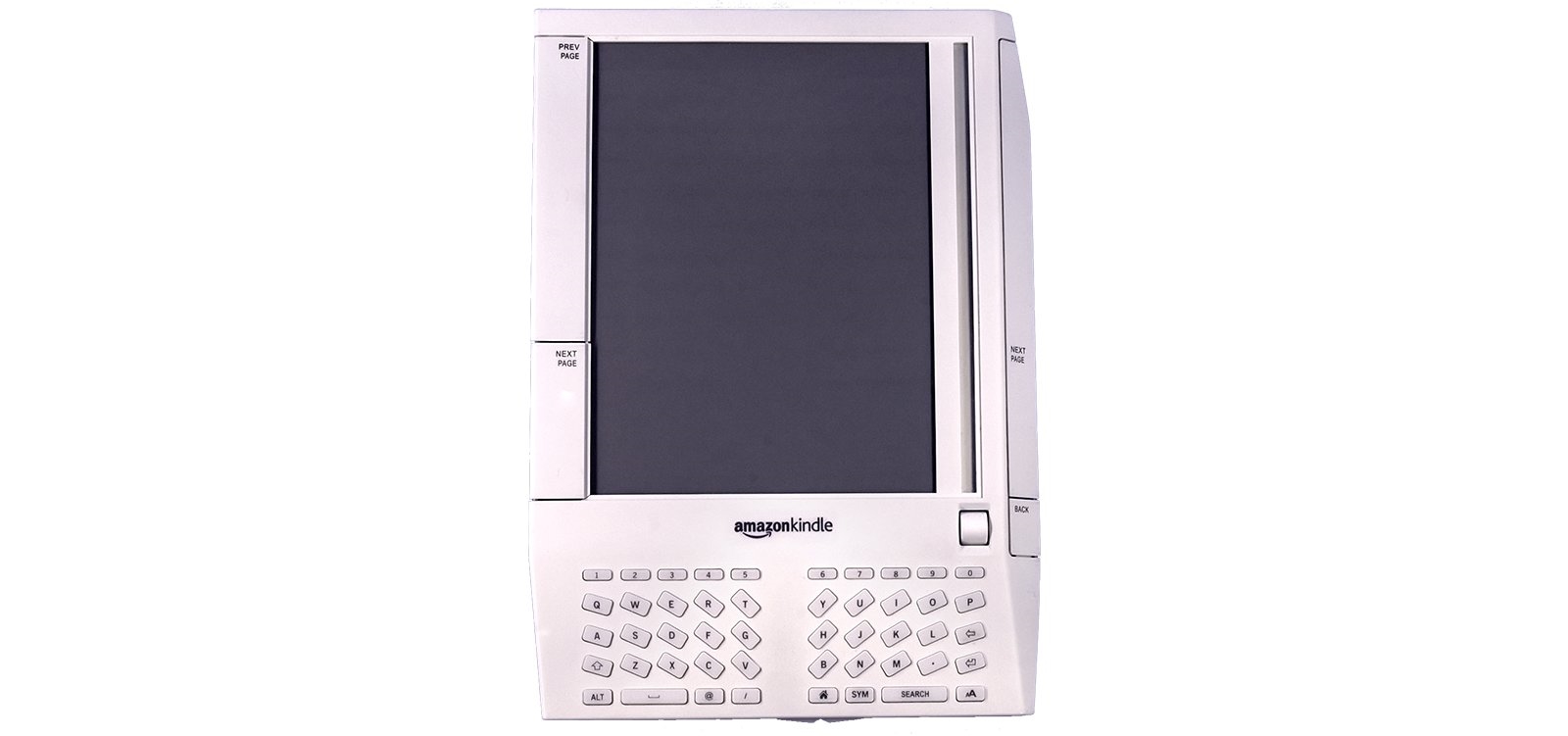
Amazon released the original Kindle back in 2007. In the years since, the devices have managed to peak, go mainstream and then get largely replaced by tablets and smartphones. Amazon’s first Kindle was 7.5 inches tall with a high-contrast screen, an SD slot for additional storage and a 3G connection that permitted users to access its “Whispernet” data network to download books on the go. It sold out in less than six hours, quickly cementing its position as the leading e-reader on the market. About two months ago we asked readers to look back and review the first-generation Kindle, more than a decade after its release. Here’s what they said about the device, from the hardware to the book selection.
Weight
The first Kindle was a far cry from the company’s modern Paperwhite reader: The original clocked in at 10.3 ounces (for reference, the 2019 model comes in at 6.1 ounces). However, our reviewers commented on how light it still feels to them, with Peter1110 calling it “easy to hold” and Kevin stating “10 ounces is heavy, until you realize that the average paperback book is 15 ounces (and hardbacks can be significantly more).”
Battery life
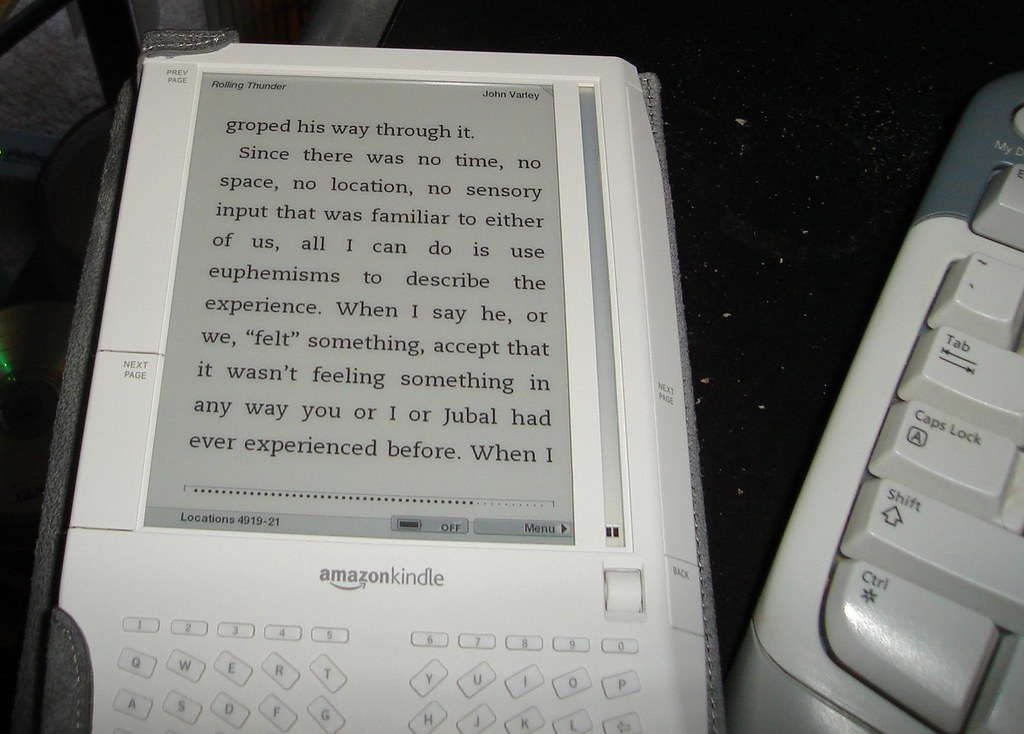 “kindle_largefont” by Drathus is licensed under CC BY-SA 2.0
“kindle_largefont” by Drathus is licensed under CC BY-SA 2.0
We heard of a conflicting experience when it came to the Kindle’s lithium polymer battery. While Tomtom11 said they’d had great experiences with the battery life on the first-generation e-reader, they also reported a minor problem. “I let the battery completely drain one time and had to remove the battery and use the reset button to get it going again. Directions on the Kindle support site took me through the process.”
Screen
Lots of users wanted to talk about the advantages of the 6-inch, 800 x 600 screen on the original device. TimothyMcGrath called it “very easy on the eyes, just like looking at paper,” while Peter1110 noted that “the screen is purposefully designed so that you can read while the sun is glaring.”
Kevin said the screen “was good, except that you still needed a light source to read by.” And Tomtom11 pointed out that “as with other ebook readers, there is no backlight, so reading in bed still requires a good lamp (or a clip-on book lamp).” This feedback was something Amazon eventually took to heart when it debuted the 2012 Kindle Paperwhite, which ran on four built-in LEDs.
Buttons and controls
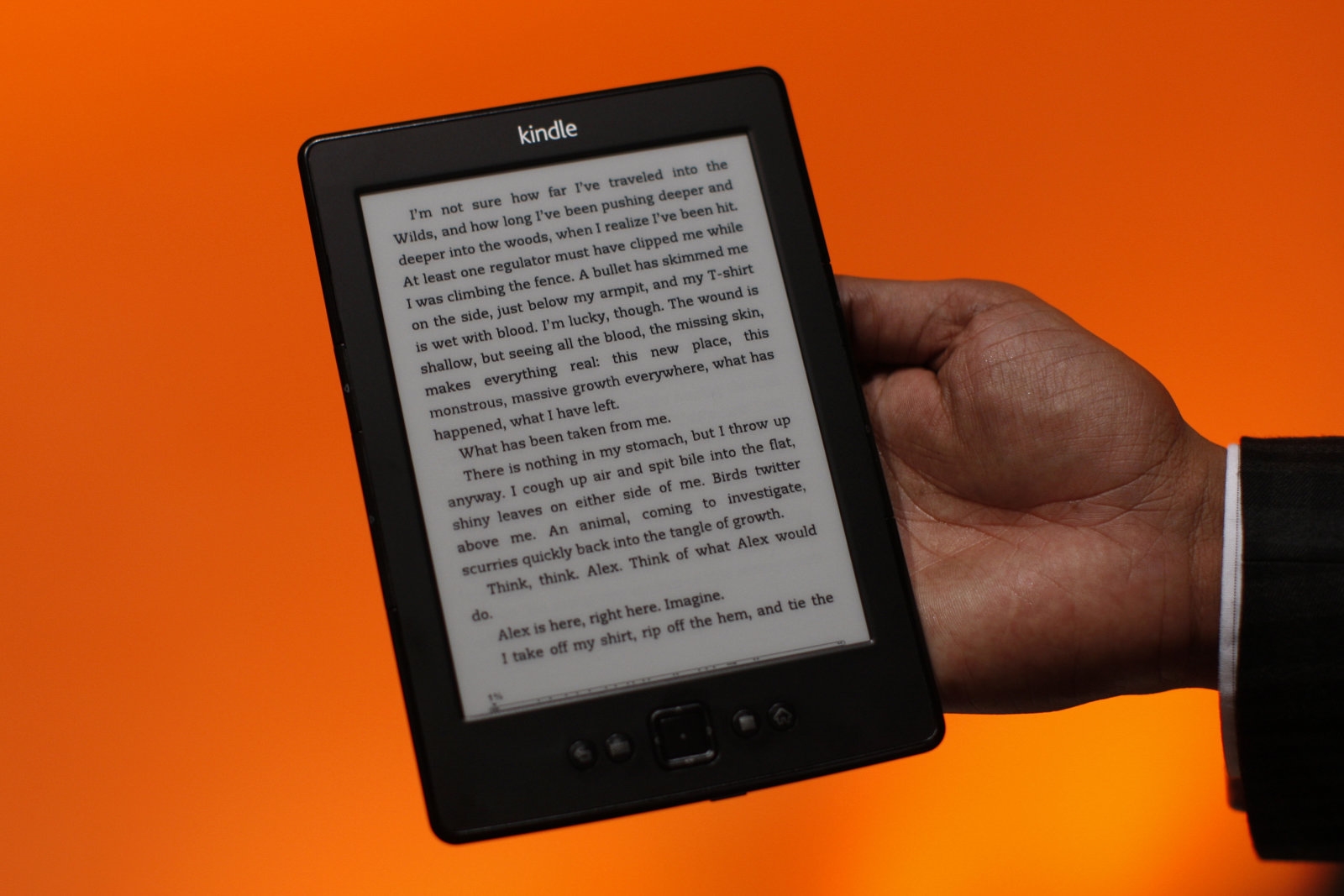
Another aspect of the Kindle that readers were eager to discuss was its keyboard and controls. In 2007, the same year the first iPhone was released, touchscreens were not yet standard. As a result of that, perhaps, the first-generation Kindle suffered from trying to cram in a full set of buttons and controls alongside the screen. Kevin said “the keyboard was made for using thumbs, but I found that to be really clunky and would just lay it down and type two-fingered.” TimothyMcGrath said that in retrospect the “controls for the Kindle are usable but after using the Kindle 2, they definitely feel inferior. It uses a sliding wheel to select items which can be difficult especially for older people.”
That irritation extended to the e-reader’s controls as well. Kevin stated the “page controls weren’t the greatest,” and that the “separate position indication was a nice touch, but it was pretty useless.” BrianCarnell agreed, saying “annotation is also an important feature to me, but I found the keyboard all but useless.” But Tomtom11 felt differently, finding that “page turns are quick and although I’m a lefty, the configurations for the buttons for turning pages are still pretty convenient.” And Peter1110 said that users “can easily move the directional keys to highlight important sentences or phrases.”
Book selection
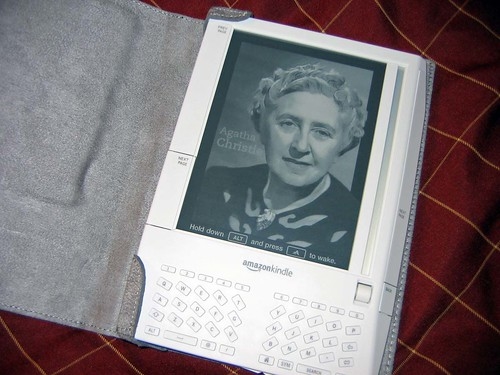 “IMG_6137.JPG” by mak506 is licensed under CC BY-NC-SA 2.0
“IMG_6137.JPG” by mak506 is licensed under CC BY-NC-SA 2.0
One thing that all our reviewers could agree upon was the importance of the Kindle’s book selection and its ability to connect to Whispernet via 3G. TimothyMcGrath thought it was “great to be able to download books without hooking up to a PC.” Ttringle said that “sampling new books cost me quite a bit of money, when Amazon makes it so easy to buy new books over the 3G.” Tomtom11 was effusive in their praise: “I absolutely love the Whispernet connectivity; no need for a computer and it allows you to download books anywhere, anytime.” And Ogre felt the “internet connectivity is what makes it so great, no other e-reader (at this time) can connect directly to the book source.” They added: “I read way more than before because I am fairly lazy and would put off going to the store to get books. I need new books now! This is what makes the Kindle better than any other reader.”
Peter1110, who felt that the “Kindle takes advantage of the enormous selection of books in the Amazon bookstore, many of which are free,” also felt that the “Kindle does not replace textbooks for college. I was initially very thrilled when I bought the Kindle version of the textbook for my biology class, however, the lack of color in the Kindle makes it hard to clearly interpret diagrams that are colored for the purpose of distinguishing between certain anatomies of the body.” (A later version of the Kindle, the DX, was better suited for textbook reading.)
BrianCarnell said that while “buying ebooks from Amazon is the main feature the Kindle has that other e-readers don’t, from my experience Amazon’s DRM scheme is pernicious and using the wireless network drained the battery ridiculously quickly, even when the device wasn’t in use.” TimothyMcGrath pointed out another drawback, stating that “books are excellent on the Kindle, but I have given up on magazines and newspapers. The format just doesn’t work for them. Amazon really needs to make it more like reading a magazine or newspaper in real life or on the web.”
Overall
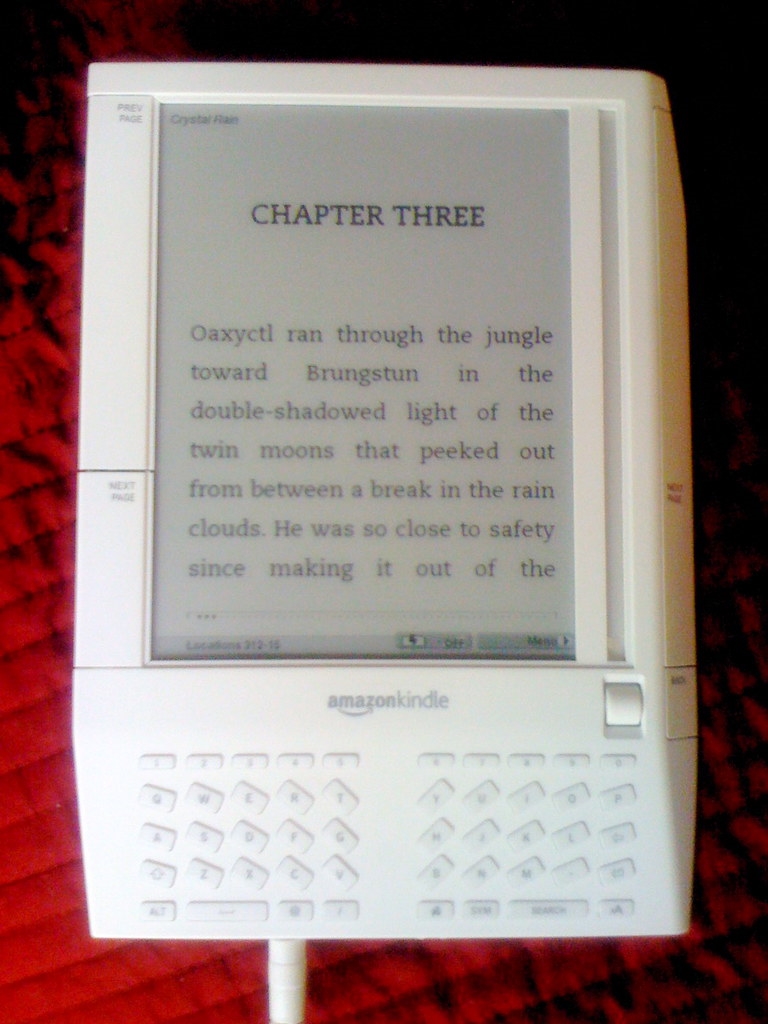 “Kindle” by FourOhFour is licensed under CC BY-NC 2.0
“Kindle” by FourOhFour is licensed under CC BY-NC 2.0
Having now gone through dozens of upgrades and improvements, the current Kindle is a far cry from the original model. BrianCarnell, who reviewed the Kindle in 2009, said he “read a few books on it and then passed it along to a coworker in favor of a Sony Reader with a touchscreen.” TimothyMcGrath, who also wrote his review in 2009, said “I highly recommend the Kindle, but if you’re planning on buying one, definitely pick up the newer version. It is much improved over this great, original device.” Kevin said “I currently use the Fire but the page controls aren’t the greatest. I actually think the Fire tablet is worse than the original Kindle because the action depends on where and how you press, it’s difficult to be consistent even after more than a year of using it.”
That said, a few users took time to point out the disadvantages of the device; BrianCarnell said that “it’s not that the Kindle is a poor device, it’s just that it is so bland there’s not much to get excited about.” However most were effusive in their praise for the gadget; both ttringle and TimothyMcGrath said they loved their first-generation Kindles, with ttringle adding “the Kindle is one of the best things a reader can do for themselves, book lovers shouldnt be without one.” Tomtom11 felt the Kindle “is a great ebook reader; overall, I highly recommend it.” Finally, Ogre, who was skeptical that the device would actually replace books for them, said “I often get tired of gadgets before too long. I’ve had my Kindle since November of 2007 and I still use it every single day.”
(15)

